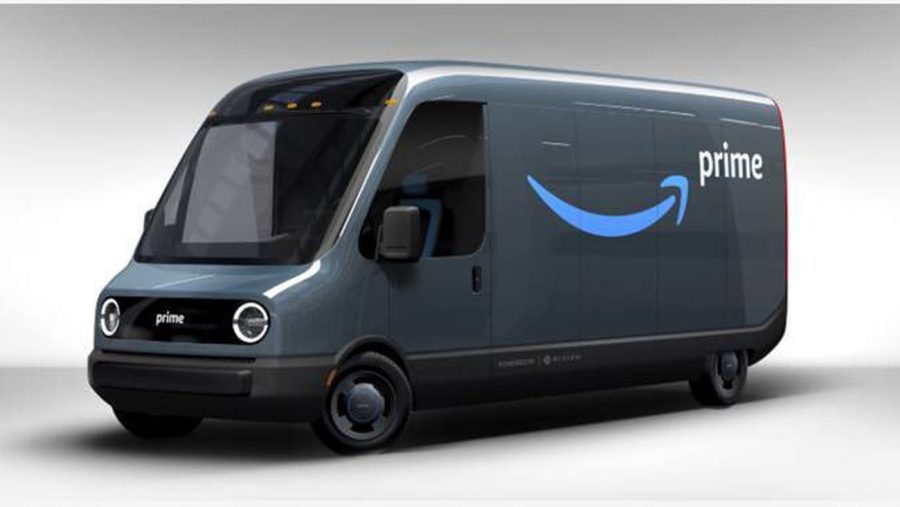Think twice before hitting “order” on your favorite online shop
Amazon purchased over 100,000 electric delivery vehicles from Rivian in 2019 to move the company towards carbon neutrality.
May 9, 2022
When stores closed their doors in March 2020 and the only necessary business was to visit the grocery store, packages piled up on doorsteps. Although the United Nations reported in May 2021 that global e-commerce jumped to $26.7 trillion because of COVID-19, the real harm comes from the households who started over-ordering long before the beginning of the pandemic and those who never stopped.
With the advancement of technology, we don’t have to leave our desks and with the click of a button, anything we could ever want comes right to our home. However, few people realize the environmental impacts of these habits. Or, they just don’t care. According to a study done by the Environmental Science and Technology Journal by the American Chemical Association, “bricks and clicks” shopping (online ordering to your door) emits more carbon dioxide into the atmosphere than “brick and mortar” shopping (in-person retail shopping).
Although I cannot precisely track the amount of carbon dioxide released with one single package containing my sister’s pants, as it travels with hundreds of other packages, let’s imagine it traveled by itself. First, the package arrived at an Amazon facility in Allentown, Pennsylvania from a location not disclosed by Amazon. Then, it traveled 540 miles to another facility in Wilmington, Ohio. According to blueskymodel.org, an airplane produces on average 53 pounds of carbon dioxide per mile; so, this trip would release approximately 28,620 pounds of carbon. Next, the package went to another facility in San Francisco, which is approximately 2,400 miles and 127,200 more pounds of carbon released into the atmosphere. Then it went to a South San Francisco facility and was driven to my house. Amazon’s delivery vehicles are almost all electric as of December 2021, so the vehicle did not emit carbon during the drive. In total, the package’s transportation released over 150,000 pounds of carbon dioxide into the air.
Now, imagine you are getting package after package delivered to your house. The likelihood that all of your goods are coming from the same place across the country is slim, which means numerous flights to San Francisco. Additionally, if the package is not from Amazon, it is likely that it will be delivered in a gas-powered vehicle, because companies like FedEx have just begun integrating electric vehicles.
Another component of online ordering is the physical packaging that the purchases arrive in. The two most common materials are cardboard boxes and plastic mailers; both have environmental implications. According to Waste Management, 70% of cardboard is recycled, but when considering the more than five million packages Amazon ships every year, the result is over one million non-recycled boxes. Additionally, poly mailers — made of polyethylene film that is derived from crude oil, a fossil fuel — are not recyclable, and they can take 500 years to decompose.
When examining the true environmental impacts of ordering online, maybe we should ask ourselves if the sum cost of buying a shirt online is worth saving a trip to the mall.










































